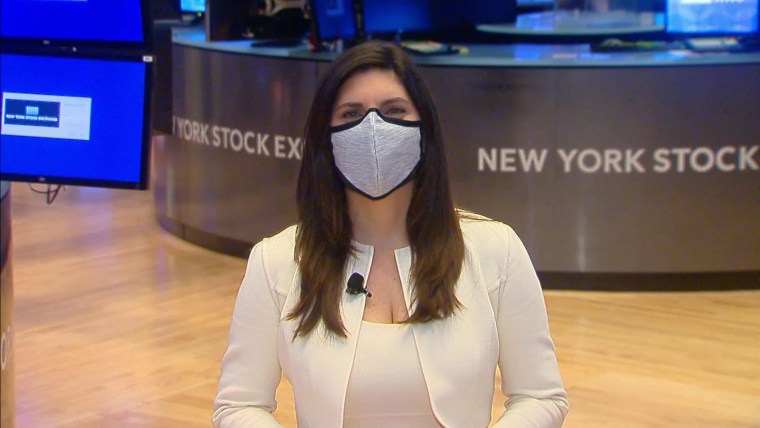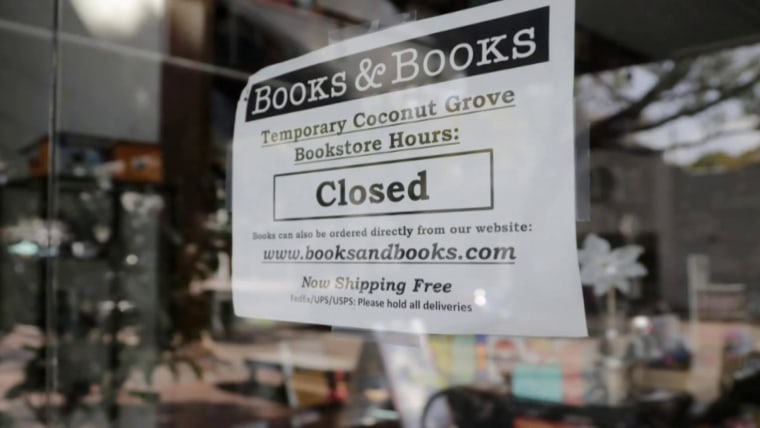After being shut down for more than two months, the New York Stock Exchange’s trading floor partially reopened on Tuesday.
New York Gov. Andrew Cuomo rang the opening bell, alongside NYSE President Stacey Cunningham. The trading floor had been closed since March 23.
“It definitely took a little while to adjust to it,” said Jonathan Corpina, a trader who has been working remotely. This week, he will return to 11 Wall Street with five of his colleagues — fewer than usual.
New rules limit how many traders can be in the building. In addition, nobody is supposed to take public transportation to work. At entrances, medical personnel will take everyone’s temperature, and there will be questionnaires. Inside the building, Corpina and his colleagues will be required to wear masks, and physical distancing will be mandatory.
Traders who go into the building will have to sign a waiver. While the Exchange is not making it public, The Wall Street Journal reported that it is an acknowledgement that returning to the floor could result in them “contracting COVID-19, respiratory failure, death, and transmitting COVID-19 to family or household members and others who may also suffer these effects.”
The waiver is a necessary precaution, since traders on the floor are not employees of the NYSE, Cunningham told CNBC on Tuesday morning. “It’s an acknowledgement to follow our protections,” she said, “Since we don’t have the ability to tell traders they can’t come in.”
“I just don’t think there is going to be a lot of moving around,” said Corpina.
That will be a significant change.
Let our news meet your inbox. The news and stories that matters, delivered weekday mornings.
“Our reopened floor will look different from the iconic images so many have grown accustomed to seeing televised throughout the trading day,” Cunningham wrote in an opinion piece in The Wall Street Journal announcing the changes.
During NYSE’s heyday, the trading floor was packed. In recent years, even as it became less crowded, it remained an enduring symbol of American capitalism and a proxy for investor sentiment.
Peter Tuchman, the most photographed person on the trading floor, will not be back on Tuesday. On March 18, he tested positive for COVID-19, and the Quattro Securities trader continues to deal with the fallout from having the disease.
“It’s like being in a boxing match,” said Tuchman, who spent 60 days away from his family, fighting fevers ranging from 100 to 103.7 degrees. The novel coronavirus affected his kidneys, prostate, nervous system and lungs. “It’s a bit of a beast,” he said.
Like many traders, Tuchman praises the New York Stock Exchange for remaining open in some capacity. In early March, as the outbreak worsened and trading became increasingly volatile, Cunningham rejected calls to close the exchange itself.
She also challenges critics who, pointing to all-electronic exchanges such as the Nasdaq, suggest traders are no longer necessary.
“Stocks trade better when the floor is open, with reduced volatility and fairer prices,” she wrote in The Wall Street Journal. “Recent data demonstrate that our trading floor saves investors millions of dollars each day by making transactions more efficient.”
Traders echo that. They say having humans on the floor makes their clients feel more confident.
Like many parts of New York City, the Financial District in Lower Manhattan is quiet and empty. Timothy Collins, the general manager at Bobby Van’s, which is catty-corner to the New York Stock Exchange, laid off some 60 employees.
Reached by phone, Collins says he is awaiting word he can reopen the steakhouse, which has been around for 16 years. In the meantime, he has Zoom calls with his former workers.
“To be honest, it kind of hit everyone in a slow-rolling way,” Collins told NBC News. “I had a big spool down, and there is going to be a big spool up.”
Like many restaurants, Bobby Van’s considered transitioning to takeout and delivery, but in the Financial District, Collins said, it didn’t make sense. No one has been going to work, “and the people that do live down here, most of them have second homes.”
As he tries to chart a path forward, acknowledging his restaurant’s party business is going to take a sizable hit, Collins says business from the NYSE is “crucial.”
“The exchange is integral to our existence,” he added. “It’s just part of who we are, and we are part of who they are.”
Even as they acknowledge the need to close the trading floor, many traders say they were sad to leave. Tuchman said he wants to get back as soon as possible, and Corpina praised the exchange’s new protocols.
“If I had to list safe places in the country right now, I would probably say the White House is No. 1, and the New York Stock Exchange is No. 2,” he said. “I feel very comfortable and confident going back.”













